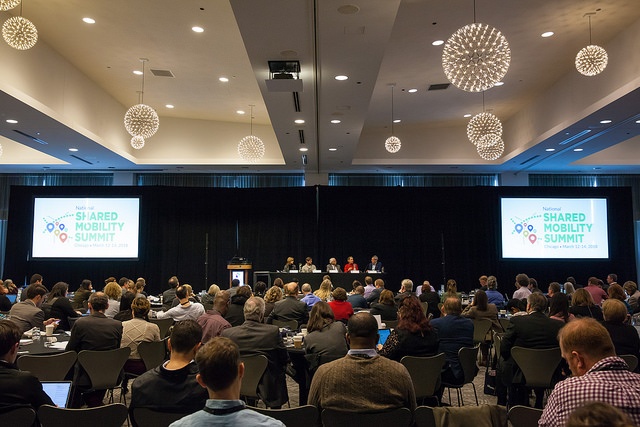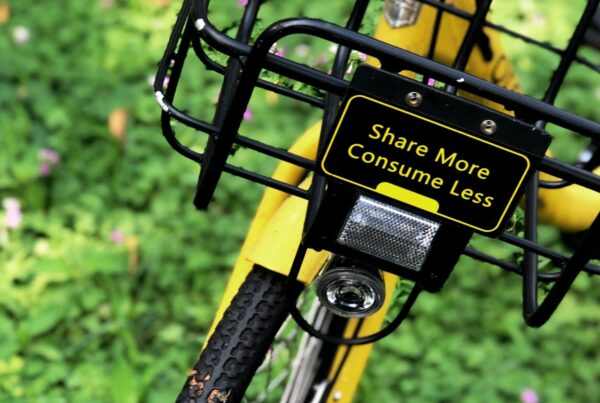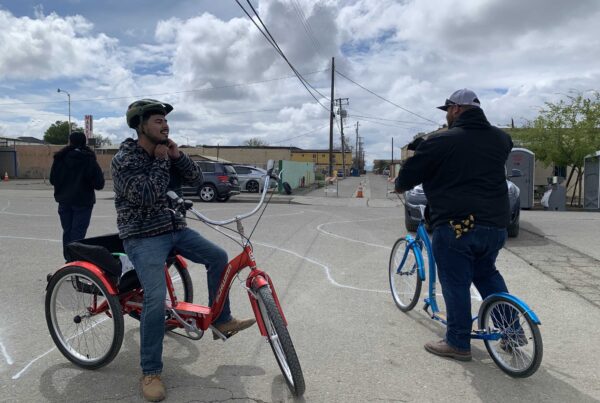Welcome to the Shared-Use Mobility Center’s weekly guide to the most impactful news, thought-provoking articles and innovative technologies that are shaping our transportation future. We believe in sharing information, just like sharing cars, bikes, and scooters, so if there’s anything additional you’d like to see, just drop us a line.
Announcements
2020 National Shared Mobility Summit
March 17-19, 2020
Hyatt Regency McCormick Place, Chicago, IL
Mobility for all is coming. Learn more.
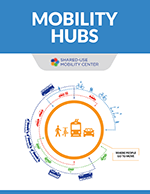 Mobility hubs come to life in the Twin Cities. A dozen non-automotive transit centers and community gathering places will increase mobility options in disadvantaged communities while providing an alternative to the privately-owned automobile. Read about this incredible victory for shared mobility in SUMC’s blog, and download the smart resources that guided the SUMC-led development committee throughout the process. Visit the Blog.
Mobility hubs come to life in the Twin Cities. A dozen non-automotive transit centers and community gathering places will increase mobility options in disadvantaged communities while providing an alternative to the privately-owned automobile. Read about this incredible victory for shared mobility in SUMC’s blog, and download the smart resources that guided the SUMC-led development committee throughout the process. Visit the Blog.
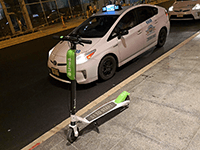 The four-month #ChicagoScooter pilot ends in less than 1 week! Tuesday, October 15th is your last day to scoot around the Windy City…for now. Hop on an e-scooter near you and share your thoughts in the official survey.
The four-month #ChicagoScooter pilot ends in less than 1 week! Tuesday, October 15th is your last day to scoot around the Windy City…for now. Hop on an e-scooter near you and share your thoughts in the official survey.
Visit the MOD Learning Center to see how an app makes riding transit easier in Ohio and Northern Kentucky.
NEORide (a council of ten transit agencies in the region) recently launched the EZfare app, a one-stop-shop for riders to plan trips and purchase tickets in 13 different transit agencies. Learn about it here.
Ridehailing/Carsharing/Carpooling
Car2go may be leaving Chicago but Streetsblog has a few alternatives in mind that officials could focus on to reduce private vehicle ownership in the city.
Uber has launched a new app for gig workers that helps connect them to employers looking for temporary staffing. This comes just weeks after California enacted a law to reclassify independent contractors as full-time employees.
With Mayor Lori Lightfoot looking to increase fees for ridehailing services in Chicago, Via wants the city to focus on decreasing solo rides while incentivizing more pooled trips.
Uber buys Middle-Eastern ridehailing giant Careem for $3.1 billion to expand its global operations.
Partnerships and Programs
Transportation for America released three guiding principles for transportation investment that focus on prioritizing maintenance backlog, designing streets for safety, and connecting people to jobs and amenities with an eye on access.
Washington State, Oregon, and British Columbia are working together on a plan to build high-speed rail that will link the Pacific Northwest corridor, the fastest growing area of North America.
The USDOT’s Federal Railroad Administration has made $396 million available in grant funding for private, state, and local rail infrastructure investments to improve intercity passenger service.
Apple’s hometown Cupertino is partnering with Via for shared, on-demand shuttle rides—the city’s first foray (finally) into providing citywide public transit.
Bikesharing and Micromobility
Lyft has blocked the Transit app’s access to New York’s Citi Bikes (operated by the Lyft-owned Motivate), making it even harder for riders to book bikeshare trips without using the official app. This doesn’t affect Divvy users in Chicago though…for now.
A new report from Bird and consulting firm Carbone 4 looks at the benefits of small electric vehicles, like dockless scooters and e-bikes, and how they can help cities decarbonize and decrease emissions as long as they don’t replace walking and standard biking trips.
Scooter startup Bird announced $275 million in funding at the TechCrunch Disrupt conference last week, then discussed the big transportation picture including the shift from traditional to shared and dockless modes.
Nice Ride Minnesota mulls moving from fully dockless bikes to adding up to 2,000 e-bikes with lock-to functionality where trips could be ended at a bikeshare station or public bike rack.
Transit
Light rail ridership is up in DC, New York, and other metros (sorry Chicago, Philadelphia, San Francisco, and Los Angeles) showing an overall, upward trend nationally compared to the same period last year in both rail and total public transportation trips.
New York turned a stretch of busy 14th street into a dedicated busway, with only buses, trucks, and emergency vehicles having access. How does it feel compared to the city’s usual traffic-burdened roads and honk-fueled air? Like a miracle, of course.
Metra is ready to ramp up investment and improvements for commuter rail riders in the next several years with $2.6 billion dedicated to rail cars, transit infrastructure, service maintenance, and stations as part of the capital program passed earlier this year.
Madison, WI Mayor Satya Rhodes-Conway wants to use a vehicle registration “wheel tax” to build out bus rapid transit and fund other bus improvements in the city.
Technology
Waymo will start mapping LA streets this week for autonomous vehicle data, but hasn’t confirmed any plans to operate self-driving cars in the city…yet.
Google’s Waze is upgrading its Connected Citizens Program data-sharing platform so that hundreds of cities and partners will have access to user-friendly dashboard analytics and visualization tools, making access to their traffic data much more intuitive.
Electric charging company Volta wants to build out a network of free, fast-charging EV stations in the US with plans to install the first 150 over the next year.
Earther warns about the impending “Carmageddon” that would ensue if proper regulation isn’t made quickly to prevent self-driving cars from making congestion, pollution, and street safety worse.
Urban Sustainability
“…much of our discourse around cars, self-driving or otherwise, is less about transforming the status quo than maintaining it, obscuring paths to progress exactly when we need them most, and leaving pedestrians right in the line of fire.” Read more about pedestrian safety trends and how roads are becoming deadlier for people (but not drivers) on The Guardian.
In a world where research, reports, and statistics on the crisis around climate change fall on deaf ears, Greta Thunberg is helping scientists. activists, and people that care about the environment have a unified voice that would have normally been ignored.
The Federal Highway Administration has been forcing cities to remove their crosswalk art, citing that it makes intersections and streets unsafe. No studies have confirmed if this is true, but stories from city officials say they actually make pedestrians feel safer.
With thousands of deaths associated with America’s automobile culture, just making them autonomous won’t magically make our streets safer. NYT looks at the stats and real-world stories of people affected by America’s driving epidemic.
Requests for Proposals, Qualifications, or Information
RFP: 2021 Transportation Alternatives Program
Kansas Department of Transportation
Kansas
Deadline: November 1, 2019
Notice of Funding Opportunity for the Pilot Program for Transit-Oriented Development (TOD) Planning
Federal Transit Administration
Washington DC
Deadline: November 18, 2019
RFI: Implementation of Bus Rapid Transit on MD 355
Montgomery County Department of Transportation
Bethesda to Clarksburg, Maryland
Deadline: November 22, 2019
Spin’s Mobility Data for Safer Streets
Spin, StreetLight Data, Populus
Application Deadline: December 31, 2019
Did someone forward this to you? You can sign up for our newsletter here.


